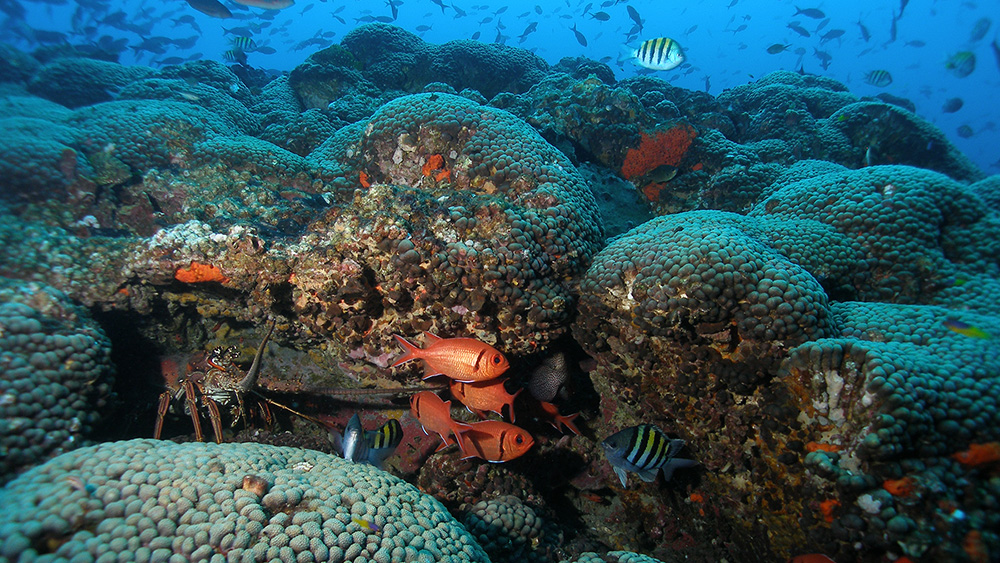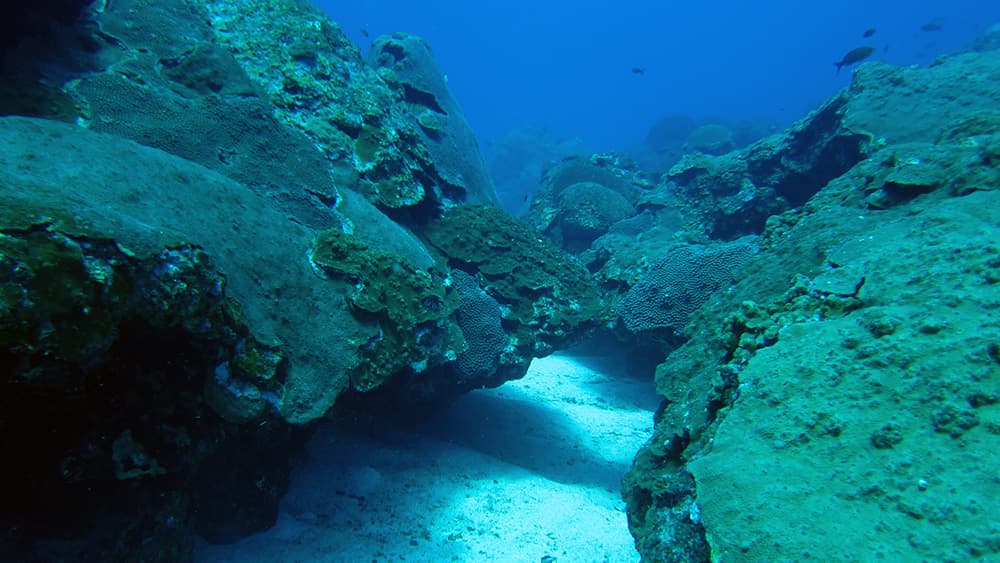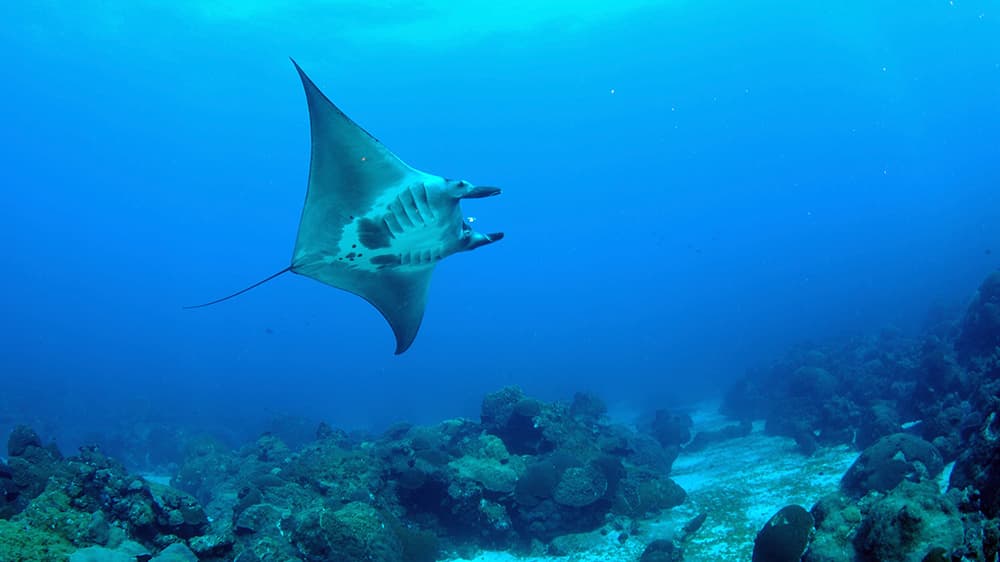
Here are some tips to help you protect the sanctuary during your visits and maintain harmony among visitors. No buts about it, the health of the sanctuary depends on everyone to behave responsibly!
Please also check out the National Marine Sanctuaries Wildlife Viewing Guidelines, available in English and Spanish.
Scuba Diving
Take only pictures: leave only bubbles.
"But, it's just one (fill in the blank)!"
Taking anything from the sanctuary is against sanctuary regulations, with some exceptions for hook and line fishing (federal fishing regulations apply). This is not the place to collect shells or bits of coral skeleton. Keep in mind also, that the queen conch, lobed star coral, mountainous star coral, boulder star coral, loggerhead turtle, hawksbill sea turtle, and giant manta ray are protected species.

"But, the shell I touched was empty!"
Many shells appear to be empty when they actually contain a startled animal deep inside. Even if the shell is truly empty, it won't be for long! There are always reef residents such as hermit crabs, barnacles, young corals, and sponges that need a place to crawl into or attach themselves to, so that they are protected from predators or the sweeping force of the currents while they grow.
Be aware of your surroundings.
"But, that was a one-in-a-million photo opportunity!"
It's easy to get caught up in the moment and not realize that you are leaning on coral as you wait for that elusive little blenny to reappear so you can take a picture. Be sure to keep your buoyancy under control and float just above the reef. Coral tissue is delicate and easily damaged by touching, poking, standing on, or laying across it!

"But, I only stopped for a few seconds."
Currents can be strong in the sanctuary. Keep yourself and the sanctuary safe by listening carefully to the dive master's report about conditions before you jump. Stick close to the mooring line if the current is strong, and grab hold of the line if you must grab onto something. Please avoid grabbing onto the reef, if at all possible.
Stay afloat.
"But, I was on a sand patch - not a coral head!"
Settling down on a sand patch may be preferable to resting on a coral head, but creatures live in the sandy areas too. Except for emergencies, there's really no reason to touch down anywhere on or near the reef. If you must sit down in a sand patch, look before you land and avoid stirring up bottom sediments.

Keep your hands to yourself.
"But, the manta ray wanted me to rub its back!"
Over the years, divers at the Flower Garden Banks have reported that the manta rays seem to enjoy having their backs rubbed. But, just because they like it, doesn't mean it's healthy for them! All physical interaction with rays and whale sharks is against sanctuary regulations, which protects both you and them.

Be courteous and keep your distance.
"But, I don't have a picture of (fill in the blank) and I just wanted to get a little closer!"
Give the local animal residents their space. Avoid crowding them or shining bright lights at them. Being cornered or startled can cause stress responses in animals, putting the photographer, nearby divers, and other sanctuary residents in danger. Be respectful–you are a visitor in their world.

Boating
Use mooring buoys, rather than dropping anchor.
"But, there wasn't a mooring buoy in the part of the sanctuary I wanted to visit!"
Dropping an anchor is strictly prohibited by sanctuary regulations. In fact, anchor damage to the corals was one of the main reasons that the Flower Garden Banks were originally designated as a national marine sanctuary. All corals, shallow or deep, grow very slowly, sometimes taking hundreds of years to reach a significant size. An anchor can destroy decades or even centuries of growth in an instant! After all, if just touching or standing on a coral damages the tissue, imagine what a 50-pound anchor will do to it.

Use mooring buoys properly.
When using a mooring buoy, pass a line from the bow of the vessel through the pennant line and back to the vessel to create a bridle. This bridle greatly reduces stress on the mooring and offers a more comfortable ride for the vessel. Mooring buoys are available on a first-come, first-served basis.

